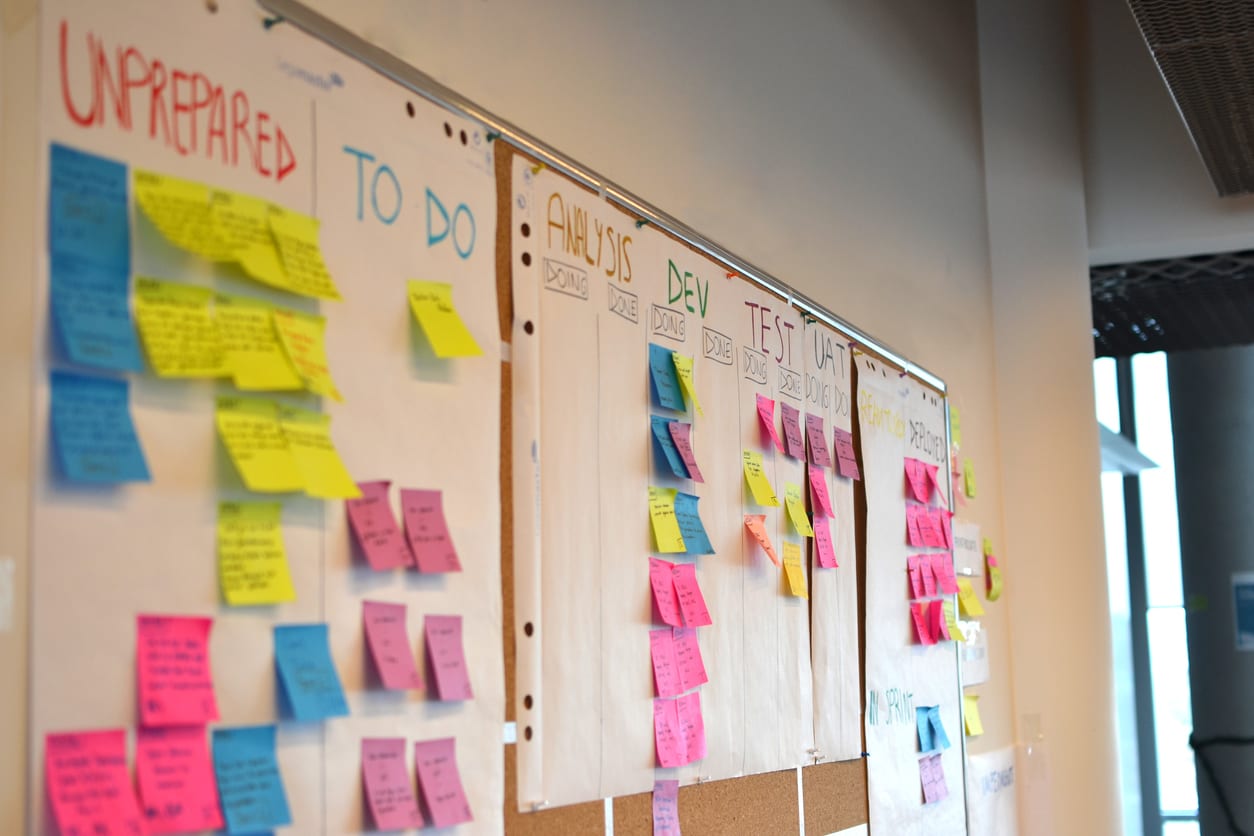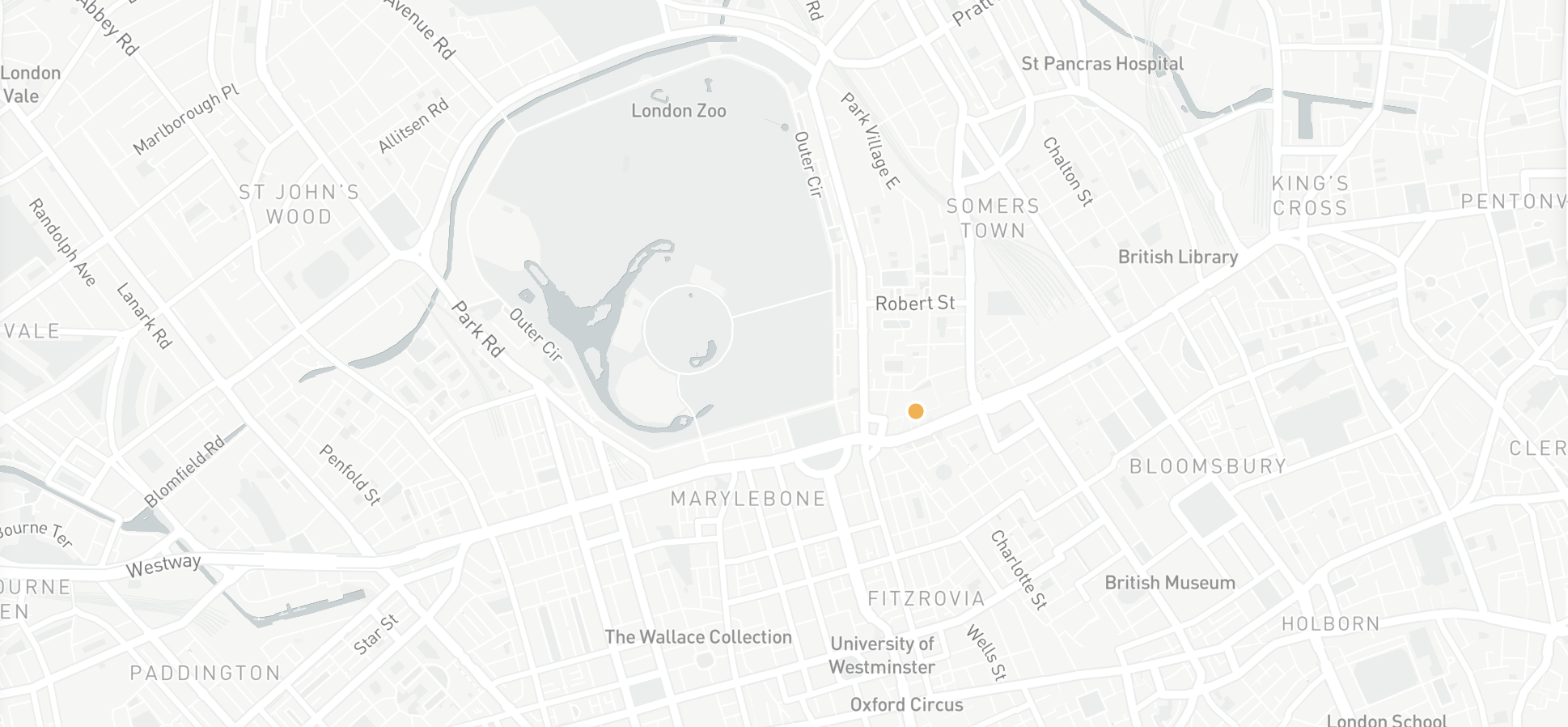Is your inbox full of meeting agendas and minutes that you haven’t got around to reading? Do you feel like you regularly have to juggle multiple tasks, never quite giving one single assignment your full attention? If work for you and your department feels non-stop but you’re still not as productive as you’d like to be, then the simple and effective project management system of Kanban might just be able to help.
What is Kanban? An intro to the project framework
What is Kanban?
In its simplest form, Kanban is a board divided into columns with headings that outline stages of progress. Cards or stickies are used to represent tasks or items which can be moved across the board to show progress.
The word Kanban loosely translates from Japanese to “visual sign” and the graphical nature to this workflow system is key to its efficacy. Created by automobile manufacturer Toyota, Kanban was originally used by production line workers to signal the steps in their manufacturing process. The system’s highly visual nature allows teams to communicate easily on what work needs to be done, when and how.
Why does it work?
“Can’t I just stick to my to-do lists?” Well, you can but there are valid scientific reasons why a Kanban could help you to be more effective. The brain processes visual information 60,000 times faster than text. So, in effect, our brains work to read text but process images more or less automatically (in fact, a recent MIT study found that we can process entire images in as little as 13 milliseconds).

In essence, Kanban takes information that would typically be communicated via long-winded text and turns it into a visually appealing and easy-to-digest format.
How can it help?
A well-placed Kanban board can help a team to:

How Kanban works
The Kanban method follows a set of four foundational principles and six core practices for managing the flow of work. Follow the practices and principles to maximise the benefits of this methodology, with the four foundational principles.
Start where you are
Kanban firmly advises not to make changes to your existing set up straight away. Apply it to your current workflow and allow changes to occur gradually over a period of team change. In other words, don’t burn your to-do list and delete all of the meetings in your calendar, allow Kanban to complement your existing processes until you’re ready to leave them behind.
Execute evolutionary changes
Agree to work at a pace that is suitable for staff. Avoid resistance by making incremental changes that everyone feels comfortable with.
Respect existing roles
Kanban does not impose top-down organisational changes so be wary of making changes to existing roles and functions straight away. As the process is implemented, staff can collaboratively identify required changes. This will help to overcome any resistance or fear of change that can often occur when such initiatives are undertaken.
Encourage leadership at all levels
Kanban encourages continuous improvement of systems and should allow for leadership acts to come from all levels of staff. Everyone from the intern to the CEO should feel able to provide ideas, show leadership and implement changes for continuous improvement for how Kanban works for your business.

The six core practices
The following six core practices will help you adopt and implement your own Kanban system and achieve the greatest success from the ongoing process.
Visualise the flow of work
This is the fundamental first step in implementing the Kanban Method. You will need to visualise (either on a physical board or using an electronic system) the journey that each of your tasks goes through before a finished product can be delivered. Your Kanban can be a very simple table with three columns that simply show whether tasks are yet to begin, are in process or are ready for completion; or it can be an elaborate process which outlines every step and layer of the process.
Once you’ve visualised the flow that projects will go through en route to completion, it’s time to visualise the work itself. This can be a series of simple white cards containing the name of the project or they can be colour coded to signify different departments, services or types of project. Initially, it’s a good idea to keep things simple and allow the complexity of your board to build as your team become familiar with the process.
Limit the number of ongoing projects
Limiting work-in-progress projects is key to the success of a Kanban. Avoid having numerous projects sitting in the “ongoing column” by encouraging staff to finish one project before undertaking another. If this seems like a daunting task, then you can start without limits and simply observe. As the process becomes established, you can define set limits to enable forward planning and optimal time management.
Manage flow
A fundamental element of the process is to manage work and resolve bottlenecks as soon as they arise. The process will enable you to see how long tasks remain in the “ongoing” column, reducing this is key to increasing productivity. As you improve flow, the delivery of work will become smoother and more predictable, making it easier for you to accurately predict the number of time projects will take. Improving your ability to forecast completion times is a key aspect of a Kanban system.

Make policies explicit
Define and visualise your process rules and guidelines to create a common policy that all staff can easily see and understand. These policies can come in the form of a checklist for each type of work item, criteria for each column or anything you feel will help your team to manage the flow of work efficiently. Policies can include things such as explicit definitions for when a project can move between columns and clear definitions of the columns themselves.
Implement feedback loops
Feedback loops are vital in any system. The Kanban method can allow and factor in feedback at various stages of the process and encourage staff to immediately point out where things could go awry. In fact, this is especially useful if it seems that the team are on the wrong track. Feedback loops are crucial to delivering the right work, product or service and doing so in an acceptable timeframe.
Improve and evolve
The Kanban system is designed to improve work processes. Adapt small changes at a reasonable pace and aim to improve gradually in a timeframe that suits the team. The key element is to evaluate the processes that you’re using to make them relevant to individual teams. The scientific method is encouraged (hypothesis-test-results) to help you make changes dependent on real-world outcomes. The impact of any changes can be clearly observed by the entire team, allowing a group decision on whether implemented changes are improving or slowing down processes. It also allows you to collect performance data either manually or automatically if your Kanban board is online.
Online Kanban tools
There are a number of benefits to storing your Kanban boards online, not least because staff can access them wherever they are. Before you decide which software management system to use, do your research to find out which online Kanban systems are right for your business.
If you’ve ever managed a project, you’ll no doubt appreciate how effective a Kanban board could be for improving communication and transparency. Team members can see in real time the status of ongoing projects. Why not give Kanban a try and see how it works for your business?
Click here for the latest news and features from SEFE Marketing & Trading or visit our homepage to find out about our latest career opportunities.
The views, opinions and positions expressed within this article are those of our third-party content providers alone and do not represent those of SEFE Marketing & Trading. The accuracy, completeness and validity of any statements made within this article are not guaranteed. SEFE Marketing & Trading accepts no liability for any errors, omissions or representations.







